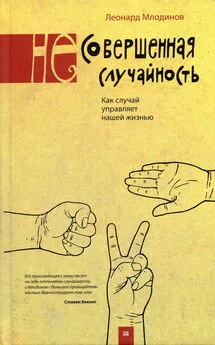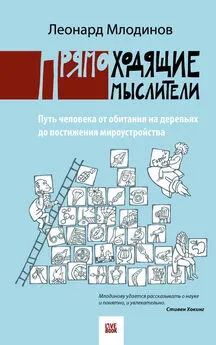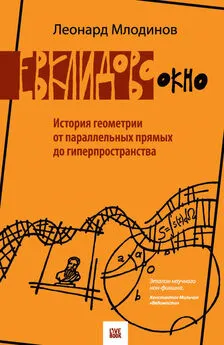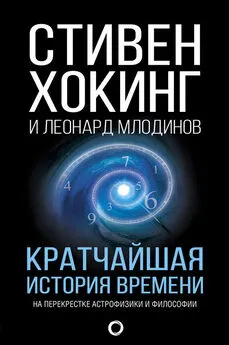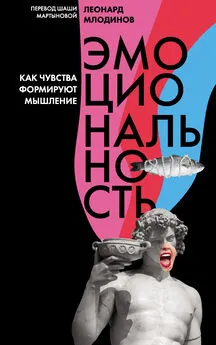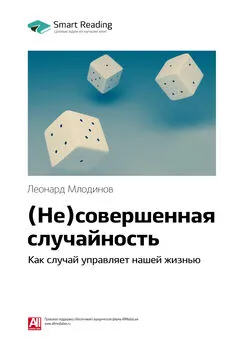Леонард Млодинов - (Нео)сознанное. Как бессознательный ум управляет нашим поведением
- Название:(Нео)сознанное. Как бессознательный ум управляет нашим поведением
- Автор:
- Жанр:
- Издательство:Livebook
- Год:2012
- Город:Москва
- ISBN:978-5-904584-34-4
- Рейтинг:
- Избранное:Добавить в избранное
-
Отзывы:
-
Ваша оценка:
Леонард Млодинов - (Нео)сознанное. Как бессознательный ум управляет нашим поведением краткое содержание
Все наши суждения — от политических предпочтений до оценки качества бытовых услуг — отражают работу нашего ума на двух ярусах: сознательном и неосознанном, скрытом от нашего внимания. Неповторимый стиль Леонарда Млодинова — живой, ясный язык, юмор и способность объяснять сухие научные факты так, чтобы они были понятны самой широкой аудитории — позволяет нам понять, как неосознанное влияет на нашу жизнь, по-новому взглянуть на отношения с друзьями, супругами, пересмотреть представления о себе самих и о мире вокруг.
vk.com/psyfb2
(Нео)сознанное. Как бессознательный ум управляет нашим поведением - читать онлайн бесплатно ознакомительный отрывок
Интервал:
Закладка:
325
Василий Кандинский (1866–1944) — русский живописец, график и теоретик изобразительного искусства, один из основоположников абстракционизма, преподавал в Баухаусе, входил в группу экспрессионистов «Синий всадник». — Прим. перев.
326
Marilyn R. Brewer and Madelyn Silver, «Ingroup bias as a function of task characteristics», European Journal of Social Psychology 8 (1978), pp. 393–400.
327
Blake Е. Ashforth and Fred Маеl, «Social identity theory and the organization».
328
Henri Tajfel, «Experiments in intergroup discrimination», Scientific American 223 (November 1970), pp. 96-102; H. Tajfel et al., «Social categorization and intergroup behavior», European Journal of Social Psychology 1, no. 2 (1971), pp. 149–178.
329
Muzafer Sherif et al., Intergroup Conflict and Cooperation: The Robbers Cave Experiment , p. 209.
330
Robert Kurzban et al., «Can race be erased? Coalitional computation and social categorization», Proceedings of the National Academy of Sciences 98, no. 26 (December 18, 2001), pp. 15387-15392.
331
Из книги Оливера Сакса «Человек, который принял жену за шляпу, и другие истории из врачебной практики», М.: ACT, Астрель, Полиграфиздат, 2011, пер. Г. Хасина, Ю. Численно. Зд. пер. наш. — Прим. перев.
332
Corbett H. Thigpen and Hervey Cleckley, «А case of multiple personalities», Journal of Abnormal and Social Psychology 49, no. 1 (1954), pp. 135-51.
333
Charles E. Osgood and Zella Luria, «A blind analysis of a case of multiple personality using the semantic differential», Journal of Abnormal and Social Psychology 49, no. 1 (1954), pp. 579–591.
334
Nadine Brozan, «The real Eve sues to film the rest of her story», New York Times (February 7, 1989).
335
Piercarlo Valdesolo and David DeSteno, «Manipulations of emotional context shape moral judgment», Psychological Science 17, no. 6 (2006), pp. 476–477.
336
Steven W. Gangestad et al., «Women’s preferences for male behavioral displays change across the menstrual cycle», Psychological Science 15, no. 3 (2004), pp. 203-207
337
John K. Kihlstrom and Stanley В. Klein, «Self-knowledge and self-awareness», Annals of the New York Academy of Sciences 818 (December 17, 2006), pp. 5-17; Shelley E. Taylor and Jonathan D. Brown, «Illusion and wellbeing: A social psychological perspective on mental health», Psychological Bulletin 103, no. 2 (1988), pp. 193–210.
338
H.C. Kelman, «Deception in social research», Transactions (1966), pp. 20–24; см. также Steven J. Sherman, «On the self-erasing nature of errors of prediction», Journal of Personality and Social Psychology 39, no. 2 (1980), pp. 211–221.
339
E. Grey Dimond et al., «Comparison of internal mammary artery ligation and sham operation for angina pectoris», The American Journal of Cardiology 5, no. 4 (April 1960), pp. 483–486; см. также Walter A. Brown, «The placebo effect», Scientific American (January 1998), pp. 90–95.
340
Жан Луи Родольф Агассис (1807–1873) — американский естествоиспытатель швейцарского происхождения, один из основоположников гляциологии. — Прим. перев.
341
Шарль Бернар Ренувье (1815–1903) — французский философ, представитель французского неопозитивизма. — Прим. перев.
342
William James, «What is an emotion?», Mind 9, no. 34 (April 1884), pp. 188–205.
343
Tor D. Wager, «The neural bases of placebo effects in pain», Current Directions in Psychological Science 14, no. 4 (2005), pp. 175–179; Tor D. Wager et al., «Placebo-induced changes in fMRI in the anticipation and experience of pain», Science (February 2004), pp. 1162–1167.
344
Летом 1878 г. Джеймс женился на Элис Гиббенз. — Прим. перев.
345
James Н. Korn, «Historians’ and chairpersons’ judgments of eminence among psychologists», American Psychologist 46, no. 7 (July 1991), pp. 789–792.
346
Письмо Уильяма Джеймса Карлу Штумпфу, 6 февраля 1887 г., цит по: …
347
D.W. Bjork, The Compromised Scientist: William James in the Development of American Psychology (New York: Columbia University Press, 1983), p. 12.
348
Henry James, ed., The Letters of William James (Boston: Little, Brown, 1926), pp. 393–394.
349
Stanley Schachter and Jerome E. Singer, «Cognitive, social, and physiological determinants of emotional state», Psychological Review 69, no. 5 (September 1962), pp. 379–399.
350
…
351
См. http://www.imdb.com/title/tt0063013/[Оригинальное название — «La motocyclette» (реж. Джек Кардифф, 1968, в главных ролях Ален Делон и Марианн Фейтфулл). — Прим. перев. ]
352
Donald G. Dutton and Arthur P. Aron, «Some evidence for heightened sexual attraction under conditions of high anxiety», Journal of Personality and Social Psychology 30, no. 4 (1974), pp. 510–517.
353
Fritz Strack et al., «Inhibiting and Facilitating conditions of the human smile: A nonobtrusive test of the facial feedback hypothesis», Journal of Personality and Social Psychology 54, no. 5 (1988), pp. 768–777; Lawrence W. Barsalou et al., «Social embodiment», The Psychology of learning and Motivation 43 (2003), pp. 43–92.
354
Peter Johansson et al., «Failure to detect mismatches between intention and outcome in a simple decision task», Science 310 (October 7, 2005), pp.116–119.
355
Lars Hall et al., «Magic at the marketplace: Choice blindness for the taste of jam and the smell of tea», Cognition 117, no. 1 (October 2010), pp. 54–61.
356
Wendy M. Rahm et al., «Rationalization and derivation processes in survey studies of political candidate evaluation», American Journal of Political Science 38, no. 3 (August 1994), pp. 582–600.
357
Joseph LeDoux, The Emotional Brain: the Mysterious Underpinnings of Emotional Life (New York: Simon and Schuster, 1996), pp. 32–33; Michael Gazzaniga, «The Split Brain Revisited», Scientific American 279, no. 1 (July 1998), pp. 51–55.
358
Oliver Sacks, The Man Who Mistook His Wife for a Hat (New York: Simon and Schuster, 1998), pp. 108–111.
359
Конфабуляция (от лат. confabulari — болтать, рассказывать) — вид парамнезий, заключающийся в том, что больной сообщает о вымышленных событиях, никогда не имевших места в его жизни. Конфабуляции иногда образно называют «галлюциногенными воспоминаниями». — Прим. перев.
360
J. Haidt, «The emotional dog and its rational tail: A social intuitionist approach to moral judgment», Psychological Review 108, no. 4 (2001), pp. 814–834.
361
Richard E. Nisbett and Timothy DeCamp Wilson, «Telling more than we can know: Verbal reports on mental processes», Psychological Review 84, no. 3 (May 1977), pp. 231–259.
362
Richard E. Nisbett and Timothy DeCamp Wilson, «Verbal reports about causal influences on social judgments: Private access versus public theories», Journal of Personality and Social Psychology 35, no. 9 (September 1977), pp. 613–624; см. также Richard E. Nisbett and Timothy DeCamp Wilson, «Telling more than we can know».
363
K. Aronson et al., «The effect of a pratfall on increasing personal attractiveness», Psychonomic Science 4 (1966), pp. 227–228; M.J. Lerner, «Justice, guilt, and veridicial perception», Journal of Personality and Social Psychology 20 (1971), pp. 127–135.
364
Цитата из романа «1984», пер. В. Голышева. — Прим. перев.
365
Robert Block, «Brown portrays FEMA to panel as broken and resource-starved», Wall Street Journal , September 28, 2005.
366
Dale Carnegie, How to Win Friends and Influence People (New York: Simon and Schuster, 1936). pp. 3–5. [Последнее рус. изд.: Дейл Карнеги. Как завоевать друзей и оказать влияние на людей , М.: Попурри, 2010, пер. Л. Кузьмина. — Прим. перев. ]
367
Голландец Шульц (Артур Флегенхаймер, 1902–1935) — американский гангстер, заработал состояние на бутлегерстве во времена Сухого закона. — Прим. перев.
368
Аль Капоне (Альфонсо Габриэль Капоне, 1899–1947) — американский гангстер, действовавший в 1920-1930-х годах на территории Чикаго. Под прикрытием мебельного бизнеса занимался бутлегерством, игорным бизнесом и сутенерством. — Прим. перев.
369
Фрэнсис Краули (1912–1932) — американский убийца-рецидивист. — Прим. перев.
370
College Board, Student Descriptive Questionnaire (Princeton: Educational Testing Service, 1976–1977).
371
…
372
…
373
David Dunning et al., «Flawed self-assessment: Implications for health, education, and the workplace», Psychological Science in the Public Interest 5, no. 3 (2004), pp. 69-106.
Читать дальшеИнтервал:
Закладка:

